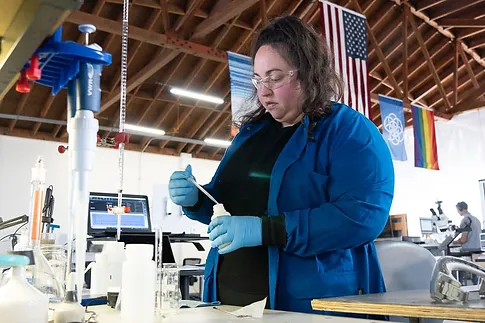The COVID-19 pandemic’s devastating toll on communities of color and concurrent national protests against recurring police violence toward Black people have sparked a groundswell of interest among investors in racial equity and justice. The Investor Statement of Solidarity to Address Systemic Racism, for example, has endorsements from more than 200 institutional investors and financial service providers.
Of all the tools at investors’ disposal, impact-first investing stands out for defining success as social change. It’s a tool uniquely suited to wealthy individuals and family offices that want to align their values, including equity and justice, with their investment choices. Yet, too few have made impact-first investing a priority.
When it comes to investing their own money, high-net-worth individuals (HNWIs) and family offices—typically managing at least $100 million—have the discretionary power to declare impact-first one of their investment tools of choice. Given the resources at their command, even a fraction of their wealth directed toward equity and justice would have considerable impact. An estimated 7,300 family offices worldwide in 2019 had some $5.9 trillion in assets under management, according to Campden Research.
In the recent past, investors might have argued that few opportunities existed to invest in equity and justice. Today, however, the opposite is true. Bridgespan recently compiled a list of 170-plus market- and below-market-rate investment funds with an economic mobility and/or racial equity focus. The list drew on similar lists compiled by CapShift and Mission Investors Exchange.
“The imperative of racial equity demands serious attention to finance and investment,” says Debra Schwartz, Managing Director for Impact Investments at the John D. and Catherine T. MacArthur Foundation. “Catalytic capital is key to advancing justice because it is powerfully impact-first and flexible. This lets us bridge tough capital gaps and open new points of economic and financial access for entrepreneurs, communities and families that mainstream investors and financial institutions continue to marginalize and leave behind.”
Increasingly, fund managers, advisers, and intermediaries have committed to identifying impact-first investment opportunities centered on equity. Drawing on the experience and advice we have heard from investors and asset managers, getting started with impact-first investing for equity involves a three-step process: clarifying commitment to equity, seeking advice from stakeholders, and picking from a growing menu of investing options.
Clarifying your commitment
Spring Point Partners, a Philadelphia-based family office committed to impact-driven investments, asked hard questions about how to align its investments with the family directors’ commitment to diversity, equity, and inclusion. “Until you understand where you sit in the systems that are perpetrating inequity, or environmental injustice, and climate change, you can’t take meaningful actions and feel confident as you progress in your decision-making about how you want to show up in the world,” says Margot Kane, chief investment officer.
To help others work through a similar decision-making process, CapShift partnered with TheCaseMade to develop a Racial Justice Framework for evaluating investment opportunities on their potential for advancing racial justice. “There has never been a more important moment to invest directly in the initiative and strength of companies and funds driven by social impact. This is especially true as our nation grapples with the issues of discrimination, exclusion, and racial injustice,” declared CapShift.
A group of some 40 asset owners, consultants, and financial intermediaries recently came together to endorse a nine-point strategy to boost the movement capital to Black, Indigenous, and people of color (BIPOC) asset managers. Traditional due-diligence and risk-assessment frameworks channel nearly 99 percent of the investment industry’s $69 trillion in assets under management to white males. The group welcomes others to join it in attempting to reduce systemic racial inequities in decisions about who manages investment capital.
Advice from stakeholders
With so much uncharted territory around impact-first investing, trusted relationships take on an outsized role.
People who have accumulated wealth are accustomed to tapping friends and peers for advice, particularly when evaluating unfamiliar investment opportunities. To guard against creating an echo chamber where implicit biases can be reinforced, don’t stop with wealthy friends and peers. Widen your circle of advisers to include stakeholders in the types of investments you intend to make.
The same holds true for impact-first investing. Even though the number of family office role models remains relatively small, pioneers in this area, such as Ceniarth and Spring Point Partners, share knowledge and offer advice. “People come to us for a pipeline they can trust and we share, perhaps share too much, but we are focused on how to evangelize the opportunities in front of our one little office,” said Greg Neichin, a Ceniarth director and board member.
On occasion, Ceniarth also recruits other like-minded family offices to join in impact-first investments. For instance, in the early days of the Covid-19 crisis in April 2020, Ceniarth committed $3 million in zero-interest loans to help community development financial institutions (CDFIs) accelerate lending to communities largely neglected by the federal government’s relief program for small businesses. Ceniarth also enlisted Candide Group and Money in Motion, two other family offices, to help expand the liquidity of CDFIs to meet the needs of marginalized and vulnerable business owners who may otherwise have been unable to access federal Covid-19 relief funds. For example, Oweesta and Southern Bancorp are CDFIs led respectively by Native American and Black individuals with teams deeply connected to the communities they invest in.
Investment options
HNWIs and family offices have a range of opportunities to pick from when investing to advance equity and justice, from funds, to direct investment, to CDFIs.
Mission Investors Exchange has compiled a list of funds (including venture capital, private equity, and private debt), advisors, and accelerators founded or led by BIPOC individuals. Many of these organizations have also made explicit commitments to support BIPOC entrepreneurs. Some take an impact-first approach to investing. Bridgespan’s list of 170-plus funds identified many with a racial equity focus. For example, the Southern Reconstruction Fund bolsters wealth creation, social mobility, and health outcomes for those most affected by racial injustice in several Southern cities. The fund deploys grants, concessionary capital (e.g., debt, equity, and guaranteed capital), and market-rate investments.
Investors also can choose from global funds where equity may take a broader lens. WaterEquity, for example, focuses solely on the water and climate crises, primarily in emerging markets. Its funds invest in a portfolio of water and sanitation enterprises. While WaterEquity strives for market returns, it takes on higher risks and exercises greater flexibility than conventional investors. Gender equity investing also is on the rise. The Wharton School’s Project Sage 3.0 published in 2020 a list of 138 funds deploying capital with a gender objective. By early 2021, that list had grown to more than 210 funds.
CDFIs were created decades ago to address the failure of conventional markets to serve communities of color in the Unites States. Today, more than 1,000 CDFIs collectively manage more than $222 billion. Low-interest loans of the type funded by Ceniarth are a portfolio staple. Historically, CDFIs have relied on philanthropy, banks, and government for funding. More recently, they have become an attractive option for impact investors who see them as platforms for serving the capital needs of communities of color.
In late 2020, 41 Black-led CDFIs formed a new organization, the African American Alliance of CDFI CEOs, to promote their need for more capital to invest in Black-owned businesses in underserved communities across the country. Investors interested in CDFIs, but unsure where to start, can turn to CNote, an intermediary that pools investors’ money and channels it in selected CDFIs. Like the CDFIs it serves, CNote, founded in 2016, is committed to increasing economic inclusion and supporting financially underserved communities. HNWIs and family offices looking to make impact-first equity investments may find the firm’s three investment funds, each anticipating low single- digit returns, of interest.
Data on how wealthy individuals and families invest to advance racial equity is largely anecdotal. But if we use philanthropic giving as a proxy, there’s room for substantial growth. Between 2008 and May 25, 2020, the day George Floyd was murdered, philanthropic racial equity funding totaled $3.9 billion. That figure grew to $5 billion within six weeks after Floyd’s death, according to Candid, an organization that tracks nonprofit funding. Sixty-four percent of those donations came from corporations, 20 percent from foundations and charities, and only 16 percent from high-net-worth individuals.
Similarly, in our interviews with wealthy families for our recent report on impact-first investing, Back to the Frontier: Investing that Puts Impact First, only a handful of interviewees offered unprompted comments about investing for racial equity. Nonetheless, those who choose to take action will find a wide range of investment opportunities. Impact-first investing is purpose-built to benefit marginalized individuals and communities. With trillions of investable assets at their disposal, HNWIs and wealthy families have nothing short of a transformational opportunity to invest in equity and justice.
Michael Etzel is a partner in The Bridgespan Group’s Boston office and leads the impact investing practice. Mariah Collins is a Bridgespan manager. They coauthored “Back to the Frontier: Investing that Puts Impact First.”











